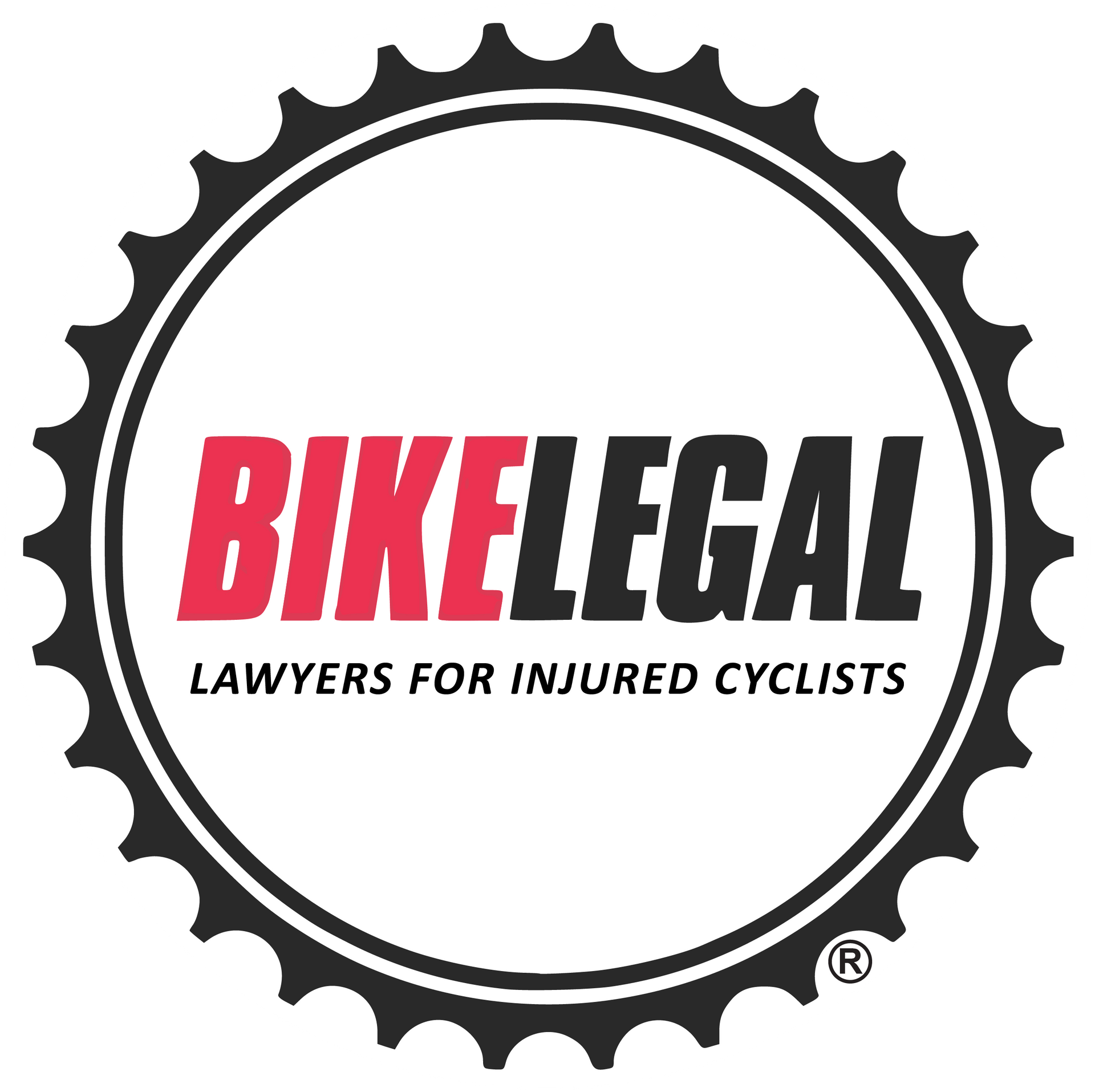Cyclist vs Auto Accidents: Where do Liabilities Lie?
YOU WON’T PAY UNLESS WE WIN!
BIKE ACCIDENTS
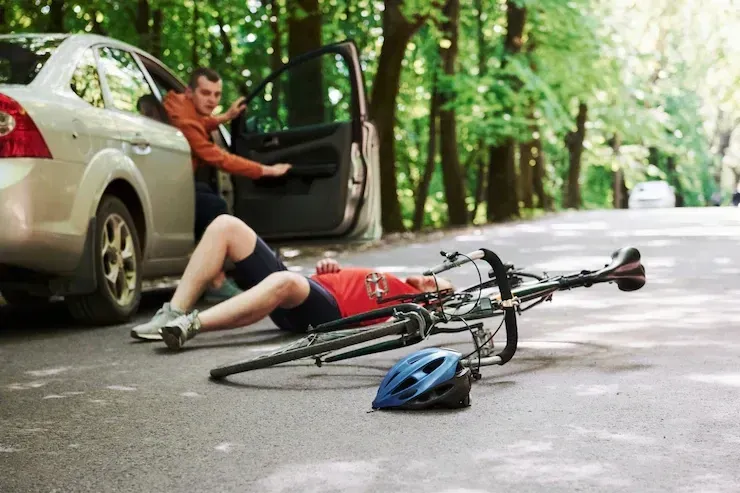
Are you aware of where the blame truly lies when a cyclist and an automobile collide? It's a question that sparks debates and raises eyebrows, yet understanding the intricacies of liability is crucial. In this article, we delve into the heart of the matter, unraveling the complexities of cyclists versus auto accidents.
Here's what's inside:
- Tips for sharing the road safely with drivers
- Common causes of cyclist vs. auto accidents
- How negligent drivers contribute to bicycle accidents
- Legal rights and responsibilities for cyclists and drivers
- Safe road sharing between cyclists and drivers
- Understanding cycling regulations
Who's at Fault?
Determining fault in a cyclist vs motor vehicle accident often involves complex legal considerations. Factors include road rules, cyclist and driver behavior, and local traffic laws. While either party can be at fault, detailed analysis of the accident scene, witness statements, and possibly surveillance footage are crucial.
Each case is unique, and liability can vary significantly, suggesting there's much more to understand about specific circumstances and laws affecting the outcome.
Legal Rights and Responsibilities of Cyclists and Drivers
In the event of cyclist vs. auto accidents, understanding the legal rights and responsibilities of both parties is paramount.
Cyclists' Rights and Responsibilities:
Cyclists enjoy certain rights and responsibilities on the road, ensuring their safety and the safety of others:
- Right to the road: Cyclists have the legal right to share the road with motor vehicles, occupying a full lane when necessary. This means cyclists are entitled to the same space and respect as any other vehicle.
- Following traffic laws: Just like drivers, cyclists are obligated to adhere to traffic laws, including stopping at red lights and yielding to pedestrians. By obeying these laws, cyclists contribute to the overall safety of road users.
- Visibility and safety: Cyclists must prioritize visibility and safety, especially during low-light conditions. This includes using lights and reflective gear to ensure they are easily seen by drivers, reducing the risk of bike accidents.
Drivers' Rights and Responsibilities:
Drivers also have specific rights and responsibilities to uphold when sharing the road with cyclists:
- Duty of care: Drivers have a legal duty to exercise reasonable care while operating their vehicles. This includes being vigilant for cyclists and other vulnerable road users, such as pedestrians and motorcyclists.
By remaining attentive and cautious, drivers can help prevent accidents and ensure the safety of everyone on the road.
- Respecting cyclists' space: Drivers must give cyclists sufficient space when passing and refrain from aggressive behaviors that may endanger cyclists. This means avoiding close passes and allowing cyclists enough room to maneuver safely.
Respecting cyclists' space promotes mutual respect and fosters a safer road environment for all users.
- Accountability for accidents: In the unfortunate event of a collision, drivers may be held liable for damages if found negligent in their actions. This underscores the importance of exercising caution and adhering to traffic laws at all times.
By driving responsibly, drivers can help minimize the risk of traffic accidents and protect themselves and others from harm.
How Negligent Drivers Cause Bicycle Accidents
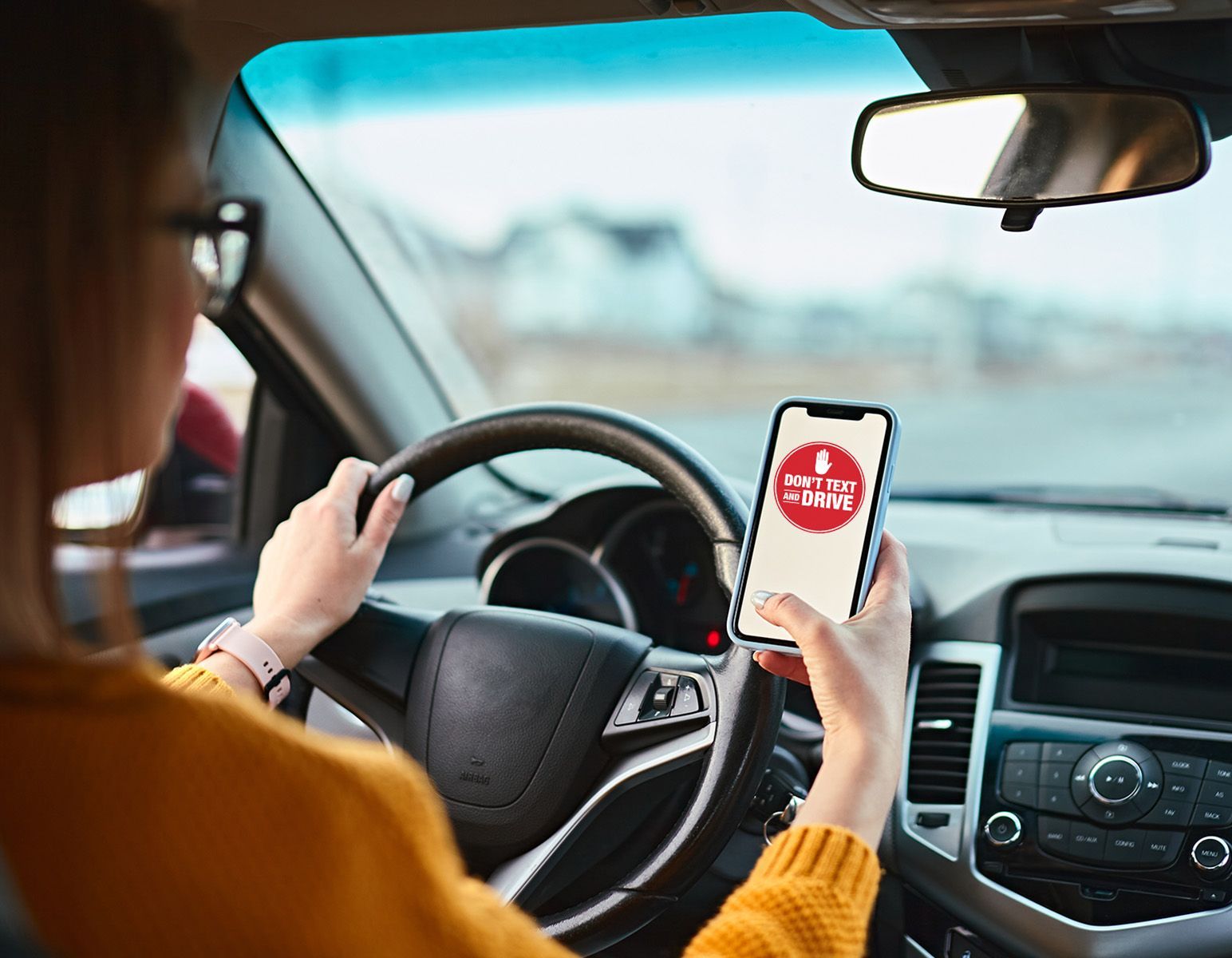
Negligent drivers pose a significant threat to cyclists on the road, leading to a multitude of accidents and injuries. Let's delve into some common examples of how negligent drivers of motor vehicles contribute to bicycle accidents:
1. Failure to Yield
Many accidents occur when drivers fail to yield the right-of-way to cyclists, especially at intersections or when making turns. This can result in collisions as cyclists are left vulnerable to oncoming traffic.
2. Distracted Driving
Drivers who engage in distractions such as texting, talking on the phone, or adjusting the radio are less likely to notice cyclists sharing the road with them. This lack of attention can lead to sideswiped, rear-end collisions with cyclists, and even car accidents.
Related: Is Distracted Driving to Blame for the Death of Cyclist Magnus White?
3. Unsafe Passing
Some drivers attempt to pass cyclists without providing sufficient space, endangering both the cyclists and themselves. Close passes can lead to sideswiped, force cyclists off the road, or even a car accident.
4. Dooring Accidents
When drivers open their car doors without checking for approaching cyclists, they can cause severe accidents known as dooring incidents. Cyclists may collide with open doors or swerve to avoid them, leading to crashes and injuries.
5. Speeding
Excessive speeding reduces a driver's reaction time and ability to stop suddenly, increasing the likelihood of accidents involving cyclists. High-speed collisions can result in severe injuries or fatalities for cyclists.
6. Ignoring Bicycle Lanes
Drivers who encroach on designated bicycle lanes or park in them illegally force cyclists to navigate around obstacles or merge into traffic unexpectedly, increasing the risk of accidents.
According to these bicycle accident statistics from the NHTSA, 938 cyclists lost their lives in traffic collisions across the United States in 2020. According to the Los Angeles Times, California leads the way as one of the deadliest states for cyclists, with about 4% of all traffic-related deaths in the state involving cyclists.
If you've been hit while cycling, Bike Legal specializes in bicycle accidents and claims. With our deep understanding of cyclists' challenges, we're here to fight for you. Whether you're injured or seeking justice, we're committed to getting you the compensation you deserve.
Comparative Negligence: A Key Legal Concept
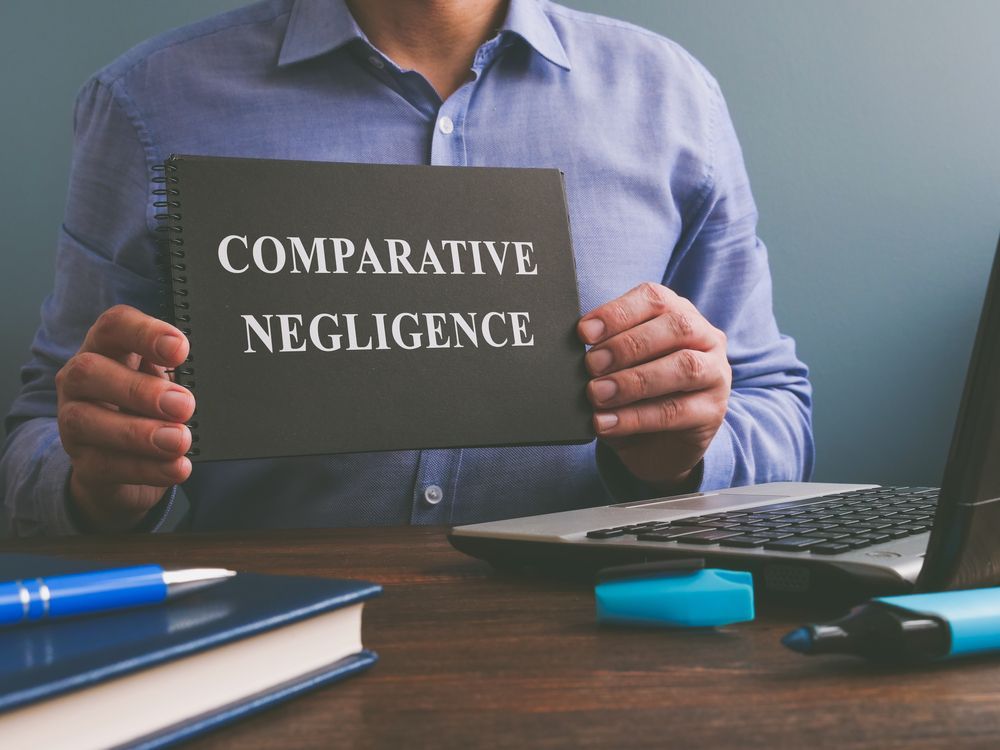
Comparative negligence is a critical legal concept that plays a significant role in determining fault in accidents, especially in situations involving cyclists and motor vehicles. This principle is about assigning a specific percentage of fault to each party involved, reflecting their contribution to the accident.
Key aspects of comparative negligence:
- Fair Assessment: Particularly in cyclist vs. auto accidents, comparative negligence allows for a balanced evaluation of responsibility. For instance, if a cyclist runs a stop sign and collides with a car that was speeding, both parties may bear some responsibility.
- Financial Compensation: Even if a cyclist is partially at fault, they can still pursue financial compensation. However, this is reduced by their attributed fault percentage. For example, a cyclist found to be 30% at fault for an accident can still recover 70% of the total damages claimed.
Insights on comparative negligence:
- According to the National Highway Traffic Safety Administration (NHTSA), in 2023, about 35% of bicycle accidents involving motor vehicles featured shared fault. This underlines the importance of understanding comparative negligence in these cases.
- There are two types of comparative negligence laws: pure and modified.
- Pure comparative negligence allows you to seek compensation regardless of how much fault you have in the accident. But, your recovery will be reduced based on your percentage of fault in the accident.
- For example, if you were 70% responsible for the accident, you are only legally able to recover compensation for the 30% fault of the other party.
- Currently, 13 states have pure comparative negligence laws including Washington, New York, and Arizona.
- In modified comparative negligence states, a cyclist cannot recover damages if their share of fault for the accident meets or exceeds 50%. This means you are only able to recover compensation if you are 49% or less at fault.
- Some states cap the share of fault at 50% while others cap it at 51%, which means you can recover compensation if you are 50% or less at fault.
- Currently, 33 states have modified comparative negligence laws including Nevada, Idaho, and Texas.
Comparative negligence acknowledges that fault in accidents is rarely one-sided. It provides a framework for assessing liability, crucial for cyclists and motorists alike.
Understanding this concept can influence behavior on the road and help individuals better navigate the aftermath of an accident. It emphasizes shared responsibility and promotes safer road use for all.
Road Sharing: Cyclists vs Drivers
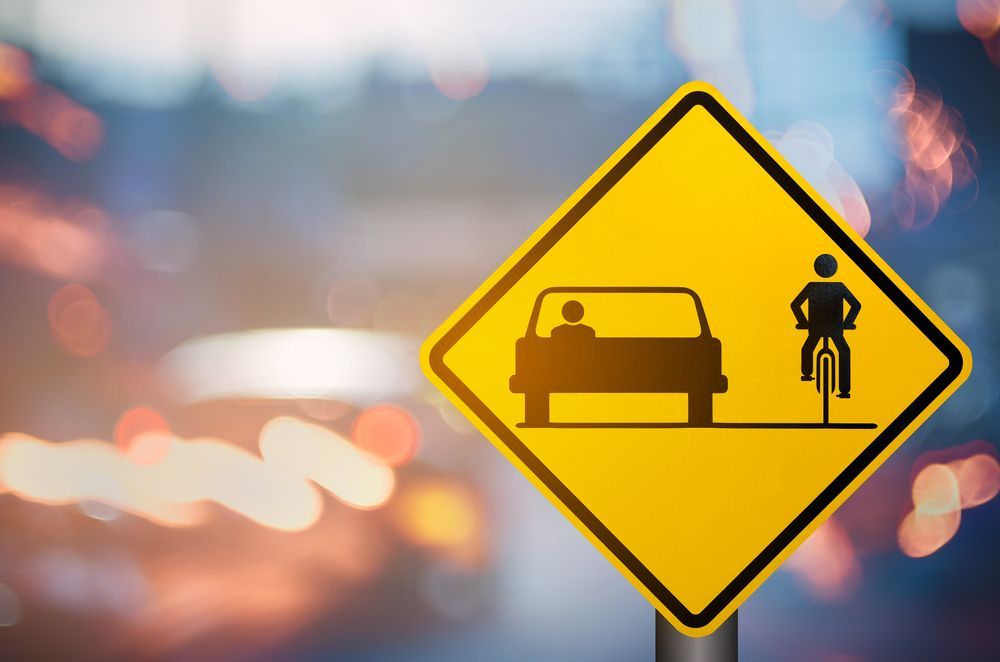
The relationship between cyclists and drivers is often fraught with tension, particularly concerning road sharing and infrastructure.
Read next: The Bicycle Lane Debate: Should Motorists Share the Road?
Navigating road sharing between cyclists and drivers presents several challenges, including:
Challenges in Road Sharing
Conflicting priorities
Cyclists and motor vehicle drivers may have differing perceptions of road use, leading to conflicts over space and right-of-way. For example, drivers may feel frustrated by cyclists taking up road space, while cyclists may fear for their safety due to close passes by drivers.
Infrastructure inadequacies
Inadequate cycling infrastructure, such as protected bike lanes and designated paths, can exacerbate tensions and increase the risk of collisions. Without dedicated spaces for cyclists, they are forced to share narrow roads with fast-moving vehicles, heightening the potential for conflicts and motor vehicle accidents.
Cultural attitudes
Deep-seated attitudes and biases towards cyclists or drivers can further fuel animosity and hinder efforts towards collaboration. Negative stereotypes or misconceptions about cyclists as "road nuisances" or drivers as "road bullies" can perpetuate a cycle of resentment and hostility on the road.
Resolving These Issues
Despite these challenges, various efforts are underway to address road-sharing issues and promote safer interactions between cyclists and drivers:
Advocacy and education
Both cyclists and drivers advocate for improved road-sharing practices through education campaigns and community initiatives. By raising awareness about the rights and responsibilities of each party, these efforts seek to foster mutual respect and understanding on the road.
Policy changes
Local governments and transportation authorities play a crucial role in implementing policies and infrastructure improvements to promote safer road sharing. This can include expanding bike lane networks, installing traffic calming measures, and implementing traffic laws that prioritize cyclist safety.
Legal recourse
Legal avenues provide a means for cyclists to seek compensation and justice in the event of accidents caused by negligent drivers. By holding drivers accountable for their actions, legal recourse helps deter unsafe behaviors and incentivize responsible driving practices.
Psst! Thinking of filing a personal injury claim? Dealing with insurance companies can be overwhelming, but you don't have to do it alone. Our experts know how to negotiate with insurers to ensure you get a fair settlement for your injuries and damages. Get in touch to find out more.
10 Tips on Sharing the Road with Drivers
- Be Visible: Wear bright, reflective clothing and use lights, especially when cycling in low-light conditions. Increased visibility makes it easier for drivers to see you and reduces the risk of accidents.
- Follow Traffic Laws: Obey traffic signals, signs, and lane markings, just like drivers. This includes stopping at red lights and stop signs, yielding to pedestrians, and using hand signals to indicate turns.
- Ride Predictably: Maintain a straight line and avoid sudden movements or weaving in and out of traffic. Predictable cycling behavior allows drivers to anticipate their movements and react accordingly.
- Stay Alert: Keep your eyes and ears open for approaching vehicles, pedestrians, and potential hazards on the road. Avoid distractions such as headphones or mobile devices that can impair your awareness.
- Use Bike Lanes When Available: Whenever possible, use designated bike lanes or paths to separate yourself from motor vehicle traffic. Bike lanes provide a safer environment for cycling and reduce the risk of accidents and serious injury.
- Make Eye Contact: When possible, establish eye contact with drivers to ensure they see you before proceeding through intersections or maneuvers. Eye contact can help prevent misunderstandings and avoid accidents.
- Watch for Right-Turning Vehicles: Be cautious when approaching intersections, especially when vehicles are turning right. Drivers may not always check for cyclists before making a turn, so exercise extra vigilance to avoid collisions.
- Be Defensive: Assume that not all drivers will see you or respect your right-of-way. Stay alert and be prepared to react defensively to potential hazards or unsafe driving behaviors.
- Avoid Blind Spots: Stay out of drivers' blind spots, especially around larger vehicles such as trucks and buses when bike-riding. Position yourself where drivers can see you in their mirrors to minimize the risk of being overlooked.
- Anticipate Potential Hazards: Scan the road ahead for potential hazards such as potholes, debris, or parked cars. By anticipating obstacles in advance, you can adjust your speed and position to safely navigate around them, reducing the risk of accidents or collisions.
At Bike Legal, our team of bicycle accident lawyers is here for you. We've got the experience and know-how to fight for your rights and get you the compensation you deserve. Whether you're filing a personal injury lawsuit, insurance claim, or punitive damages, an experienced personal injury attorney is waiting to help. Our track record speaks volumes – book a free consultation with us today!
Understanding Bicycle Laws and Regulations
To navigate cyclist vs. auto accidents effectively, it's essential to grasp the laws and regulations governing cycling.
Traffic Laws for Cyclists:
Right-of-way: Cyclists must yield to pedestrians and follow traffic signals and signs, just like drivers. For example, when approaching a stop sign, cyclists are required to come to a complete stop and yield to any vehicles or pedestrians with the right-of-way.
Lane positioning: Cyclists have the right to use the full lane when necessary, and drivers must respect this space. This means cyclists can occupy the center of the lane to assert their presence and prevent unsafe passing by drivers.
Equipment requirements: Many states require cyclists to use lights and reflectors at night and adhere to specific safety equipment standards. This includes having a white front light and a red rear light or reflector to increase visibility in low-light conditions.
Regulations Specific to Cyclists:
Helmet laws: Some jurisdictions mandate the use of helmets for cyclists, especially minors, to enhance safety. Wearing a helmet reduces the risk of head injuries in the event of a fall or collision, making it a crucial safety measure for cyclists of all ages.
Sidewalk riding: Laws regarding cycling on sidewalks vary by location, with some permitting it and others prohibiting it. Cyclists should familiarize themselves with local regulations to determine whether sidewalk riding is allowed and exercise caution when sharing pedestrian spaces.
Talk Liabilities with Bike Legal
Remember that mutual respect and understanding are key to sharing the road. We covered a lot of ground in this article, now, let's recap some key takeaways:
- Understand your rights and responsibilities as a cyclist and a driver.
- Stay visible and predictable on the road to avoid accidents.
- Be cautious of negligent drivers and know how to react defensively.
- Advocate for safer road-sharing practices in your community.
- If you've been injured in a bicycle accident, seek legal advice to protect your rights.
Looking for legal support after a bicycle accident? Bike Legal specializes in championing cyclists' rights and providing expert legal support. Our team is dedicated to helping injured cyclists navigate the legal process and secure the compensation they deserve.
Call or email for a free case review and let us fight for your rights on the road.
Read Next
Call 877-BIKE LEGAL (877-245-3534)
For a free case review
